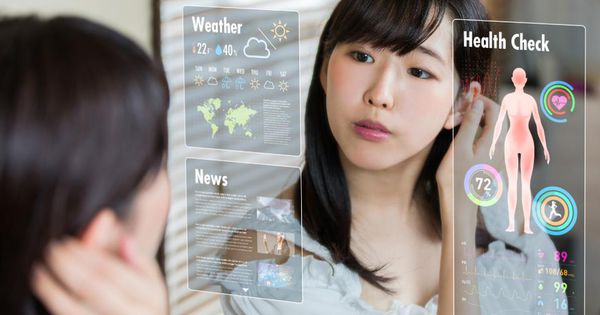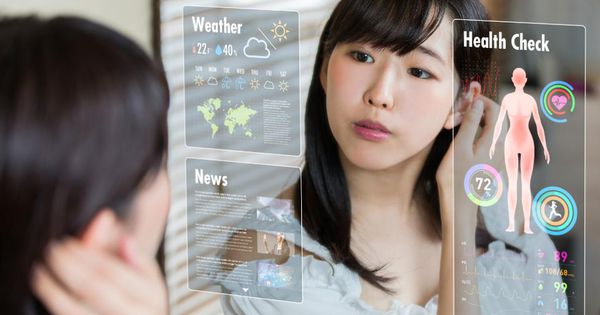
Shutterstock
This week saw a lot of machines taking over for humans in both the pharmacy and warehousing industries and augmented reality finally go mainstream in retail. China continues to commit to innovating faster than any other country and This Week In China Tech is our way to keep you on top of the most important stories coming from the mainland. Here are this week’s headlines.
Reimagining Retail With Three New Augmented Reality Innovations
JD.com, one of China’s largest e-commerce companies, announced the new Augmented Reality (AR) Innovation Alliance (article in Chinese) and brought three new AR products to market. The alliance brings together hundreds of corporations, including Intel, Wal-Mart, Vipshop, Lenovo, and Carslan. Both Wal-Mart and Carslan both committed to bringing JD’s new AR products to their stores.
The three products that JD announced this week are as follows:
- AR Dressing Mirror: Using 3D scanning and artificial intelligence, consumers’ height, chest, waist, hip, etc. measurements are taken in five seconds. JD’s system then quickly builds a personalized 3D image of the customer that allows the customer to virtually try on new clothes.
- AR Makeup Mirror: Using similar technology as the AR Dressing Mirror, customers can virtually try on many different cosmetic products, share their virtual image with the new makeup on social media and ask feedback from their friends.
- AR Smart Glasses: These are the least interesting as they are very similar to older AR technology like Google Glass, but JD still announced them as a way to fill in the gaps for less specific shopping use cases. These glasses will use the same technology as the previous products (AI, AR, 3D mapping, etc.)
AR technologies have been rumored to be the future of retail for many years, but JD.com has started to demo mature AR use cases. JD.com can now connect their database of customers to the brick and mortar retailers that deploy their AR technologies. This seamless connection between the offline and online retail worlds allows for both groups to make a better decision about what products they develop and where they should invest in new offline retail locations. There’s also early proof in the sales numbers that this strategy works. JD.com has been able to show that by combining these AR experiences with their artificial intelligence engines that they have increased online orders by 9.6% and decreased customer return rates by 7.5% . If these numbers are remotely correct, this technology will have every retailer on Earth scrambling to catch up.
Shutterstock
China Opens World’s First 100% Robotic Warehouse, Called Asia No. 1
We wrote about this idea a few months ago, but JD.com has officially opened (article in Chinese) the doors to their completely automated warehouse. The warehouse only handles mobile phone orders at the moment but will now be responsible for handling 70% of all mobile phone orders in Jiangsu, Zhejiang, and Shanghai. The machine-run warehouse can handle 200,000 orders per day, a task that would normally take 300 warehouse employees to accomplish .
So how did JD.com accomplish this feat of innovation? They had to create four brand new operating systems that were all designed in unison: receiving, storage, ordering and sorting. The receiving and storage systems use high-density storage shelves that can hold 60,000 boxes at one time. These shelves are equipped with infrared nodes at consistent distances on every shelf so that the robots can accurately measure and position each box autonomously. The packaging system uses QR codes from each product, which is scanned and transmits the exact dimensions of the product so that JD’s packaging robots can make the perfect package or paper bag for delivery. Finally, JD uses Automated Guided Vehicles (AGVs) in their sorting system which is powered by 2D visual recognition, 3D visual identification, and 2.5D vision technology (both visual and infrared) to make sure the robots pick and pack the right product every time.
JD.com, like Amazon and Alibaba, have a lot to gain by driving warehousing costs down, and Asia No. 1 does just that, by removing the need of human workers, errors, and increasing delivery speeds for customers.
Shutterstock
Alibaba Announces The Pharmacy Of The Future
Telemedicine and remote healthcare have received a lot of media coverage in the last few years, but it seems like China wants to lead this revolution too. This week, Alibaba announced the ‘future pharmacy’ in Zhengzhou, where customers can pay with their face and bring testing devices home with them without paying a deposit (article in Chinese). The future pharmacy is 200 square meters and is optimized for a completely seamless shopping experience. This means, there don’t need to be any humans working at the pharmacy.
The new customer paradigm is as follows:
- Conduct a remote consultation with a doctor from the convenience of your home
- Based on the consultations’ diagnosis, patients will go to the future pharmacy and pick up the prescribed medications and a medical test or device if the doctor deems this necessary (and using Alibaba’s Sesame Credit, you won’t have to pay a deposit to take the device home)
- If the medication can be bought over the counter, you can simply buy the pills using the future pharmacy’s vending machines using your face to authenticate and pay using AliPay.
Alibaba isn’t the only one that sees this as the future of medicine. Over 100 offline pharmacies have committed to join this program and build a seamless online to offline consumer customer experience. This seems like a future that will make its way West as you can still get the same level of care and access to doctors remotely and security measures can be enforced using technology vs. humans at pharmacies.
That’s it for this week in China Tech. If you have any stories you think we should cover next week, feel free to message me and make sure to check back for more stories coming from China next week!

